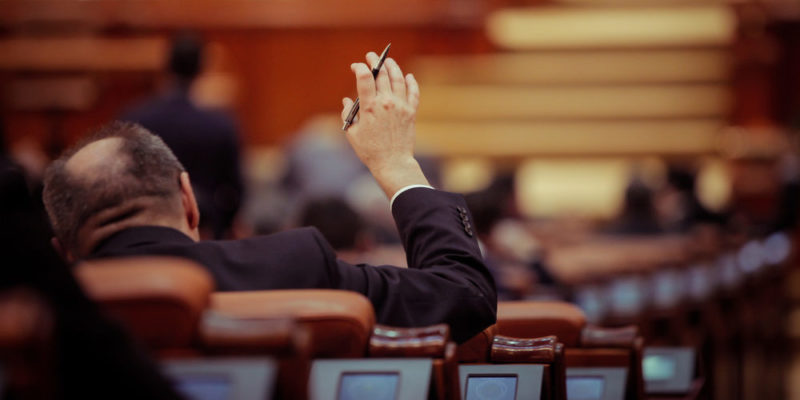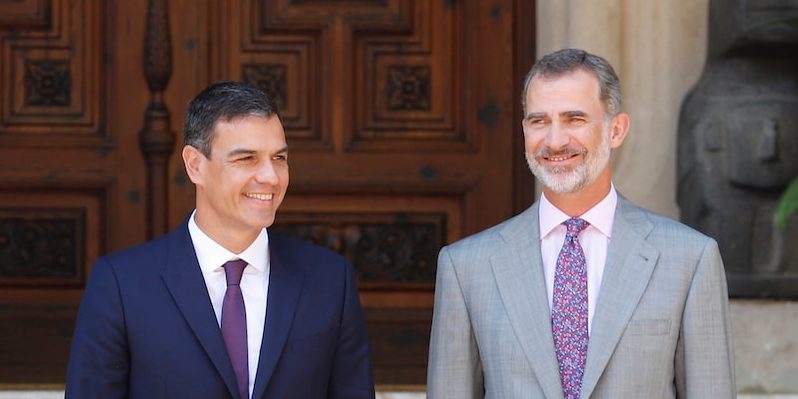We explain what the Legislative Power is, its origin and who makes it up. Also, what are its general characteristics and example.
What is the legislative branch?
Legislative power or legislature is called one of the three public powers assigned to the State in modern Republics . It differs from the executive power (the political and administrative leadership of the country) and the judiciary (the execution and interpretation of laws ).
Legislative power normally resides in a legislative assembly, also called a congress . In it are the deputies and senators elected by popular vote . Each one of them fights for the approval and / or repeal of laws for the better functioning of the Republic.
The total of the members of the legislative power constitute an institution of debates called parliament , congress or assembly. They act on behalf of the different political parties and tendencies that make up the town.
What is the origin of the legislative power?

Parliamentary assemblies existed primitively in Classical Antiquity . They first arose in Ancient Greece and later in the Roman Empire .
The Roman assemblies fluctuated in their functions in the monarchy (appointing emperors) and the republic (employing the Roman Senate). However, a parliament as we understand it today did not exist until the Middle Ages .
At that time the absolutist monarchies that proliferated so much with the Christian era began to meet resistance from the new precapitalist social classes . Among them, the bourgeoisie (that is, the merchants) drove the regime change that led to the establishment of democratic republics.
With the new political system, the people could elect their representatives to go to debate in a national assembly. The first of these, in fact, took place during the French Revolution of 1789. One of its decisions was to proclaim for the first time the universality of human rights .
Who makes up the legislative branch?
The legislative power is made up of legislators: deputies or senators , also known as congressmen or parliamentarians. All of them are part of a plural body of debates called the Legislative Assembly (or Congress, Parliament, National Assembly, Senate, etc.).
These officials are elected by free, universal and secret popular vote . They can belong to different political parties, express different political tendencies and thus represent the diversity of the nation.
Powers of the legislative power

The main functions of the legislative bodies are:
- The formulation, discussion and approval of the laws that govern the nation.
- Administration of the national budget and approval of any budget item requested by the other powers.
- Limit or supervise the functioning of the other public powers, especially the executive, having to ratify in writing any agreement, treaty or agreement signed.
- In the event of a crisis or emergency, Congress can ratify, remove, or investigate any acting political representative.
Types of Legislative Assembly

There are two main forms of Legislative Assembly: bicameral or unicameral
- The unicameral Legislative Assembly (a single chamber). It is typical of small and more or less homogeneous countries, in which the legislative power corresponds to a single assembly of deputies with voice and vote in all matters.
- The bicameral Legislative Assembly (two chambers). It is divided into two separate legislative compartments: the lower house or chamber of deputies, and an upper house or senate. The decisions of the upper body are more important than those of the lower body, and for a law to be approved it generally must have the approval of both houses.
Differences between deputies and senators
In a bicameral legislative regime, deputies and senators are divided into two chambers. The difference between the two chambers varies and depends on the specific government regime , but usually involves two moments of debate.
- Chamber of Deputies. It is usually the lower house of the National Congress, that is, the first to debate the bills. Their terms are usually shorter and they are chosen by the people by direct vote.
- Senate. It is the chamber of senators, also called the upper chamber. Their terms are usually longer and they are elected by indirect vote. In the federative republics , they usually correspond to the number of federated states or provinces.
In some cases, the upper house has greater decision-making power , while in others it plays a role of legal advisor, giving the lower house a new opportunity to modify or reject bills.
What is parliamentarism?

A "parliamentary regime" is usually called any political system that has an assembly in which laws are debated . However, we speak of a very specific form of government when referring to parliamentary democracy or parliamentarism.
This is a system of government in which the executive branch is not elected directly by popular vote , but indirectly from the vote of parliamentarians. In other words, the legislative branch elects the executive branch.
Usually this dynamic occurs in countries where, in addition to the head of government (such as a prime minister) there is a head of state (King or president).
Currently, heads of state do not have decision-making power . However, when parliamentary monarchies began , it was the way to oppose a democratic executive power to monarchical power. This occurs in countries such as the United Kingdom and Spain .
Importance of the legislative power
The legislative power is key in a democratic republic , as it serves as an important counterweight to the rest of the powers. This is because it debates and votes laws independently of any position of the executive branch.
In addition, their decisions, both regarding new laws and necessary modifications in existing laws, mark a way forward for the judiciary . In the field of Law , it can be the expression of the popular will, since it is democratically elected.
Example: Argentina

In the Argentine Republic , legislative power is exercised by the National Congress , made up of two chambers: that of Deputies and that of Senators. All its members elected by universal, secret and direct suffrage.
The deputies are elected by the entire population as a whole , through their political parties, their social organizations , etc. Senators are elected in each province to represent it in the National Congress. This is because it is a federal regime .
Each chamber deals separately with:
- Deputies :
- Receive bills presented by popular initiative.
- Start the popular consultation process for a bill.
- Initiate laws on contributions and recruitment of troops.
- Publicly question any figure of the executive power of the nation before the Senate.
- Senators :
- Judge the accused politically by the Chamber of Deputies.
- Authorize the declaration of a state of siege by the President.
- Regulate the legal matters of Law Tax collection agreement.
- Approve the laws issued in the Chamber of Deputies.
- Appoint together with the executive magistrates, ambassadors, business managers and other officials.
What is the judiciary?
The judiciary is the public power in charge of exercising justice . Interpret and enforce the laws in every possible national sphere: criminal, civil, constitutional, procedural, etc.
It is the state arm in charge of making legal decisions and therefore capable of exercising punishments, requesting the forces of public order to capture and arrest a citizen found guilty of a crime. It also fulfills other functions that have to do with the legal framework of the nation.
What is the executive branch?
The executive power is the "head" of the State , that is, the power in charge of leading the Republic and making strategic decisions , like the captain of a ship. It is made up of the figures of the president, vice president, ambassadors and the ministerial train, that is, those who are in charge of external relations, maintenance and strategic planning of state resources.
The above content published at Collaborative Research Group is for informational and educational purposes only and has been developed by referring reliable sources and recommendations from experts. We do not have any contact with official entities nor do we intend to replace the information that they emit.
MA student of the TransAtlantic Masters program at UNC-Chapel Hill. Political Science with a focus on European Studies. Expressed ideas are open to revision. He not only covers Technical articles but also has skills in the fields of SEO, graphics, web development and coding. .
Leave a reply
Your email address will not be published. Required fields are marked *Recent post

Sport: What Is It, Types, Risks, Features, Characteristics and Examples

Dogs: Emergence, Features, Characteristics, Feeding and Breeds

Story: Definition, Elements, Structure, Features and Characteristics

